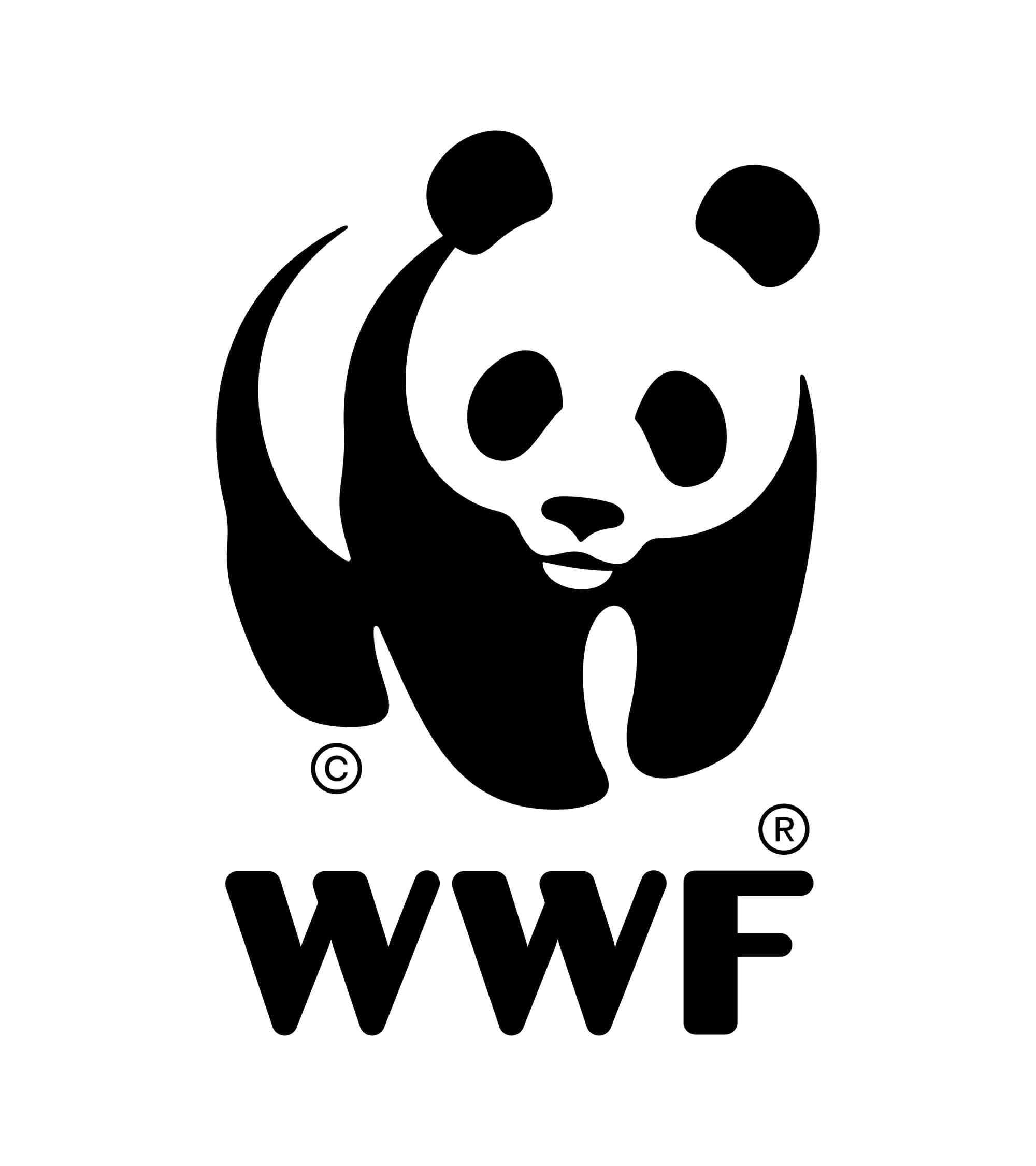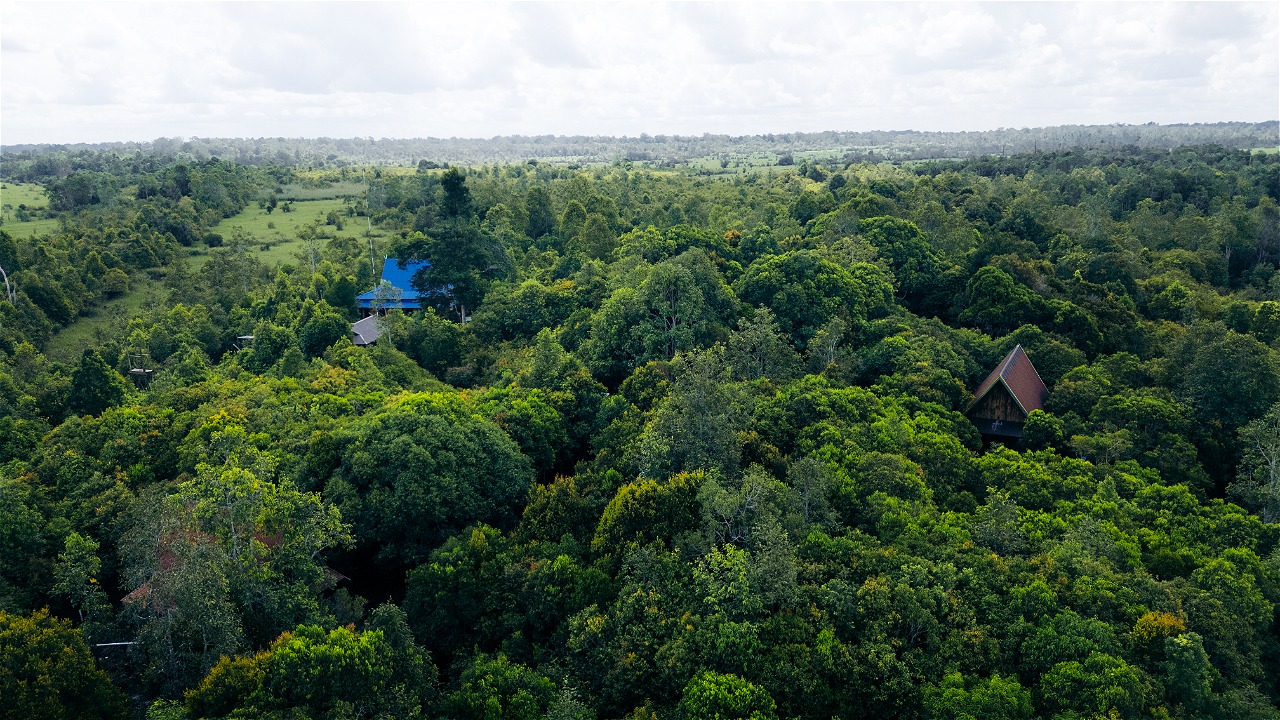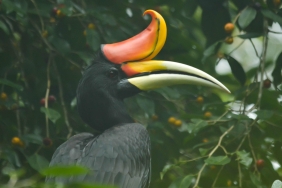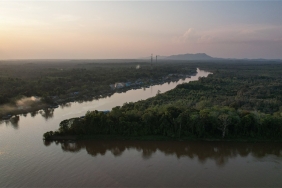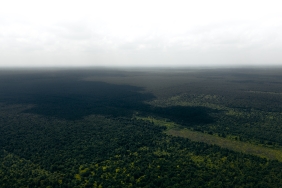HEART OF BORNEO BEATS STRONG ON FIFTH ANNIVERSARY
A new report released by WWF to commemorate the Heart of Borneo (HoB) Declaration’s 5th anniversary, shines a positive light on the environmental status of this iconic 220,000 km2 landscape.
The Heart of Borneo Declaration, signed five years ago on February 12, 2007, committed the governments of Brunei Darussalam, Indonesia and Malaysia to the conserve and sustainably develop the 22 Million hectare ‘Heart of Borneo’.
However until now, there was no baseline data from which to assess the environmental status of the region or monitor changes over time. That is about to change with a new report produced in consultation with a wide range of specialists and scientists who have been working on Borneo ecology for many years.
The new report: The Environmental Status of the Heart of Borneo, analyses the environmental health of the area via 13 key targets and more than 50 indicators. The targets include endangered animal species, such as the Orang-utans, Rhino and Pygmy Elephant and a selection of ecosystems such as lowland, heath and montane forests and river systems. Each key target has been given a rating of very good, good, fair or poor – depending on its current quality within the Heart of Borneo (HoB).
The good news
The good news overall, is that most forest types in the HoB are currently rated as good or very good. This is particularly important for lowland forest which is under severe threat across the rest of the island of Borneo. In fact, given that lowland forest is prime habitat for Pygmy elephant, orang-utan and Rhino, the HoB may be the last stronghold for the preservation of this type of forest on Borneo.
The bad news
The bad news is that the HoB still remains under serious threat from industrial conversion of natural forest to palm oil and other agricultural crops, as well as illegal logging and unsustainable rates of legal timber extraction. Forest fire, mining and over hunting of wildlife are also major threats which future versions of this report will serve to monitor.
The report was released by WWF’s Heart of Borneo Initiative. Its team leader, Adam Tomasek, highlighted the significance of the report.
“For the first time the environmental health of the HoB has been assessed using a series of scientifically derived biological and ecosystem indicators and the results have indicated the HoB is currently in good health,” he said.
“Just as importantly, now for the first time, the three HoB governments and key stakeholders will have a credible and easy to use tool to monitor progress in terms of improvements or degradation in key natural health measures for the HoB. It is a management tool which can be used to improve decision making on the sustainable use and conservation of this globally iconic landscape,” he said.
WWF encourages the three governments of Borneo to use the report to raise awareness of the high conservation values of the HoB and the major threats to its continued survival as an area of global biodiversity significance.
The report was written by WWF Indonesia’s field biologist, Stephen Wulffraat with funding from the Sall Family Foundation via WWF US.
For further information, please contact:
- Adam Tomasek, Leader, Heart of Borneo Initiative, WWFTel: +62 21 5761070 Ext. 228, E-mail: mailto:atomasek@wwf.or.id
- Christopher Greenwood, International Communications Manager, Heart of Borneo Initiative, WWFTel: +60 128281214, Email: cgreenwood@wwf.org.my
The Environmental Status of the Heart of Borneo is available in both long and ‘short summary & overview’ versions.
A range of pictures of select targets featured in the report is avaiable on request.
Notes to editors
About Heart of Borneo
The ‘Heart of Borneo’ is one of the only remaining places in South-east Asia that still holds huge tracts of continuous pristine forest. It straddles the trans-boundary highlands of Brunei, Indonesia and Malaysia and reaches out through the foothills into the adjacent lowlands. This Heart of Borneo programme aims to assist Borneo’s three governing nations (Brunei, Indonesia and Malaysia) to conserve the Heart of Borneo through a network of protected areas and sustainably managed forest, and through international co-operation led by the three Bornean governments. The forests of the Heart of Borneo are some of the most biologically diverse habitats on Earth, possessing staggeringly high endemism levels across all groups of plants and animals.
The Heart of Borneo Declaration
In February 2007, the governments of Brunei Darussalam, Indonesia and Malaysia signed the Heart of Borneo Declaration to protect an area of more than 220,000 square kilometres in the centre of the island and bordering all three countries. Together they emphasised the fact that these tropical rainforests have strategic, global, national and local functions, not only for citizens of these three countries but for the global human race. The declaration is supported under important regional and international agreements such as Association of East Asian Nations (ASEAN), Brunei, Indonesia, Malaysia, Philippines East Asia Growth Area (BIMP-EAGA), Asia-Pacific Economic Co-operation (APEC), and the United Nations Convention on Biological Diversity (UNCBD).
For more information visit: www.panda.org/heart_of_borneo
